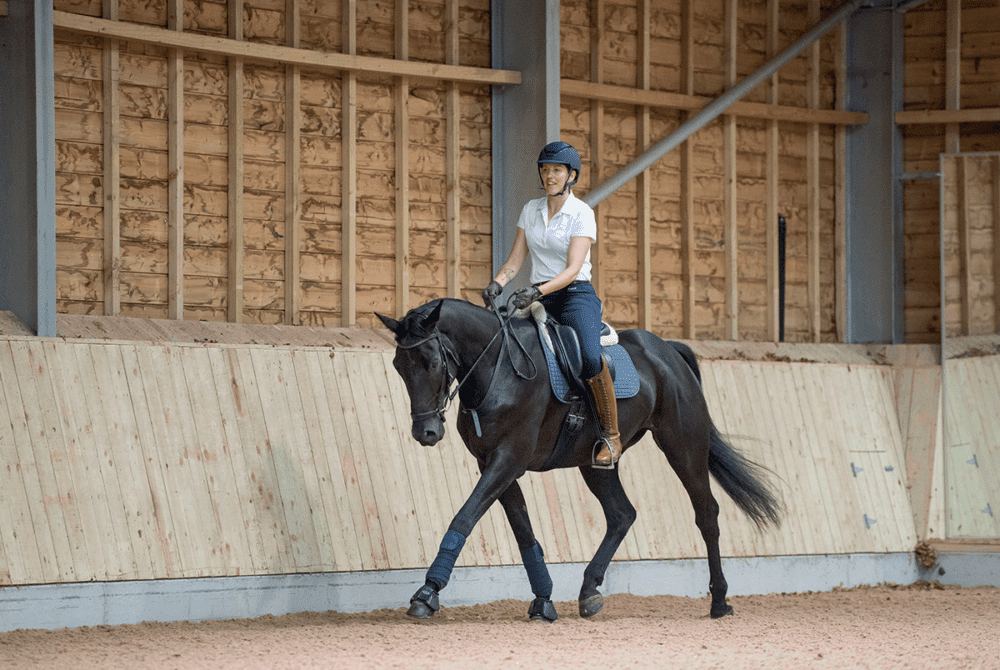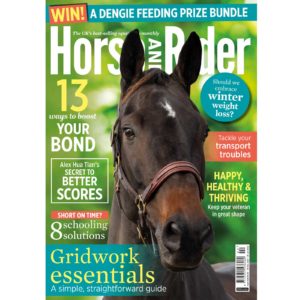Anna Miller’s guide to young horses and improving their flatwork
Posted 22nd December 2021
Give your horse the solid foundation he needs for a successful riding career

Teaching young horses the ropes is one of the best parts of my job. The process certainly comes with its challenges, but it’s also incredibly rewarding to compete a horse you’ve produced from day one. There are fundamental lessons you can teach him in the early stages that’ll make the rest of your training journey easier, and are worth revisiting from time to time even with the more established horse.
Focusing on maintaining rhythm and balance, I share some of my favourite exercises that I practise with my young horses every time we enter the arena, and I consolidate them regularly with my older ones, too. With patience and perseverance, it won’t be long before you have a flatwork superstar on your hands.
Find your rhythm
If your horse struggles to work with an even tempo, you’ll find it hard to train him for any discipline. At all levels, but especially in the earliest stages, rhythm is the key to everything he’ll do. Rhythm and balance always go hand in hand so, before you can think about developing your horse’s paces, he needs to have a certain level of balance in place. As you ask him for more expression or changes of gear, you don’t want to lose the quality of the natural paces entirely, but you’ll need to push him beyond his comfort zone for a few strides at a time for him to improve and develop.
The key here is that he needs to have an easy, natural pace to begin with – so, making sure these foundations are solid before you progress to focusing on suppleness or roundness will help your future training run a lot more smoothly.
Slowly, slowly
When you ask a horse to drop down a pace, those who are young or inexperienced will naturally want to flop and cut the engine completely. This often results in legs flying all over the place and your horse’s frame going from being closed and connected to strung out and disengaged. One of the most effective exercises I like to revisit every session is progressive transitions. This is where you ask for downwards transitions slowly and gradually, so you can focus on encouraging your horse to use his body correctly and stay connected. Think about breaking it down, for example trot, jog, walk, dribble, halt – even if it takes a lap of the arena or a couple of 20m circles until he finds his balance and still feels forward in the downwards transition. Working in this way will help a weaker horse build up his core muscles and encourage him to use his abdominals – they’re the muscles he needs to engage to carry you through the transition.
Stop by
When teaching your horse to halt, it’s important to bear in mind that he’s likely going to be very soft backed and lacking in muscle. So, simply tucking your tailbone underneath you, closing your thighs and cuddling him with your legs should be enough to make him stop. Then, the rein contact is simply there to be a boundary and encourage him to stay round. Imagine you want him to take the weight back and close his hindlegs behind you when you ask for halt, rather than pulling the front end to stop.
Use your voice
You’re not allowed to use your voice in a dressage test, but with young horses it can be a very handy training aid. It can work especially well when they’re transitioning from the lunge to ridden work, as it’ll help to translate the aids they’ve already learnt.
Top tip
When training a young horse, try to resist fiddling and asking too many questions at once. This will only confuse him, so try to keep your aids as clear and concise as possible.
Want to read the rest of this article and find out what other expert tips Anna has for producing a young horse’s flatwork? Then grab your copy of Horse&Rider February on sale 30 December 2021











